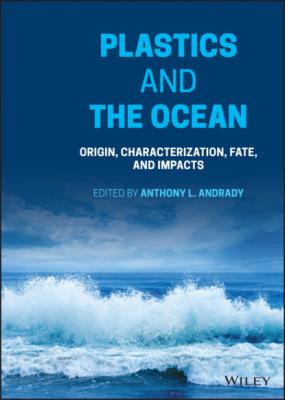Plastics and the Ocean. Группа авторов
Чтение книги онлайн.
Читать онлайн книгу Plastics and the Ocean - Группа авторов страница 41
 in the surface layers of these fragments compared to the inner core.
in the surface layers of these fragments compared to the inner core.
2.3.2 The Complexity of Intentionally Added Versus Adsorbed Additives
The reverse of the above process of leaching results in plastics absorbing free additives and other chemicals or acting as a sink for these compounds in the ocean (see Chapter 9; Amelia et al. 2021; Liu et al. 2016; Menéndez‐Pedriza et al. 2020). In fact, the sorption of nonadditives, such as metals and HOCs, to the surface of the polymer can even affect the leaching kinetics of intended additives from a plastic (Kedzierski et al. 2018).
Field studies investigating environmental transport of additives are, therefore, confounded by additives that contain contributions from intentionally added compounds as well as those adsorbed by the plastic from water. Chen et al. (2019) found higher additive concentrations in smaller versus larger marine plastic fragments, a finding opposite to that from Tanaka et al. (2020). The two studies examined the same polymer type, highly weathered PE fragments, from the same general region, central North Pacific, but differed in the additive classes targeted. Chen et al. (2019) measured BPA and APs, which are not common additives in PE, but instead are globally distributed chemicals free from plastics, whereas Tanaka et al. (2020) measured UV stabilizers that are almost always added to PE. The findings contradict because the dominant transport mechanisms were different for the two cases. UV stabilizers were leaching out of, while the BPA and APs were sorbing to the smaller fragments. Both leaching and adsorbing, however, were enhanced by the smaller fragments’ increased surface area‐to‐volume ratio.
Table 2.5 Reported log K ow values, water solubility, molecular weight, and LD50 values of common plastic additives.
Source:
| Chemical name | Abbreviation | Additive class | Log K ow | Water solubility (μg/L) | Molecular weight (g/mol) | D. magna 48 h LD50 (mg/L) |
|---|---|---|---|---|---|---|
| Butyl benzyl phthalate | BBP | Plasticizer | 4.70 | 2.7 | 312.65 | 3.24 |
| Di(2‐ethylexyl) phthalate | DEHP | Plasticizer | 4.88–7.73 | 23–340 | 390.57 | 0.35 |
| Diethyl phthalate | DEP | Plasticizer | 2.54 | 1 080 000 | 222.24 | 86 |
| Diisodecyl phthalate | DiDP | Plasticizer | 9.46–10.36 | 0.0022 | 446.68 | >0.02 |
| Diisononyl phthalate | DiNP | Plasticizer | 8.60–9.37 | 0.023 | 418.62 | >0.06 |
| Di‐n‐butyl phthalate | DnBP | Plasticizer | 4.27 | 11 200 000 | 278.34 | 2.99 |
| Di‐n‐octyl phthalate | DnOP | Plasticizer | 7.73 | 22 | 390.6 | >0.16 |
| Tris‐(2‐chloropropyl) phosphate | TCPP | Plasticizer | 2.59 | 1 600 000 | 327.6 | 81 |
| Di‐2‐ethylhexyl adipate | DEHA | Plasticizer | 8.12 | 0.53 | 370.58 | >54 |
| Acetyl tributyl citrate | ATBC | Plasticizer | 4.92 | 1700 | 402.48 | 5.1 |
| Hexabromocyclododecane | HBCD | Flame retardant | 5.07–5.47 | 2.1–48.8 | 641.7 | 146 |
| 2,2′,4,4′‐Tetrabromodiphenyl ether | PBDE 47 | Flame retardant | 6.81 | 15 | 485.79 | 0.00789 |
| 2,2′,4,4′,5‐Pentabromodiphenyl ether | PBDE 99 | Flame retardant | 7.39 | 9.0 | 564.7 | 0.00261 |
| Decabromodiphenyl ether | PBDE 209 | Flame retardant | 9.97 | <0.1 | 959.2 | >2.5 |
| Tetrabromobisphenol A | TBBPA | Flame retardant | 4.50 | 171.00 | 543.9 | 0.69 |
| 2,2‐bis(bromomethyl)‐1,3‐propanediol | BBMP | Flame retardant | 0.85 | 38 000 | 261.94 | 653 |
| Tris‐(2‐chloropropyl) phosphate | TCEP | Flame retardant | 2.59 | 1600 | 285.48 | 381 |
| 2,6‐ditert‐butyl‐4‐methylphenol |
|